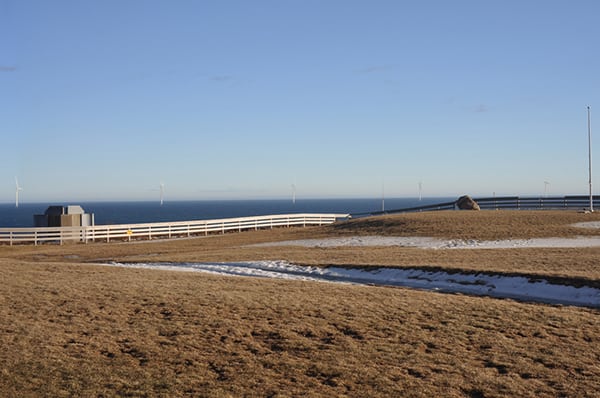One Step Back, One Step Forward for U.S. Offshore Wind
Though offshore wind is becoming increasingly important in Europe, with many hundreds-of-megawatts projects in service, the sector has stagnated in the U.S., with no operational facilities—and some high-profile failures.
In early January, the 468-MW Cape Wind project in Massachusetts, which was on track to become the nation’s first offshore wind farm, abruptly lost its power purchase agreements (PPAs) after the developers missed a deadline to close financing and begin construction. The project faced extended litigation from opponents, which observers believe may ultimately have killed it (see “Cape Wind Finally Blows Out” in the March 2015 issue).
That event left another, albeit much smaller, project the frontrunner for the first offshore facility to come online in the U.S. About two weeks after Cape Wind suffered its setback, Deepwater Wind, the developers of the five-turbine, 30-MW Block Island Wind Farm off Rhode Island, announced that improvements in turbine technology would allow it to generate more power than originally envisioned under its PPA with National Grid (Figure 2).
 |
| 2. On track. The five-turbine Block Island Wind Farm in Rhode Island, shown in this photo mock-up, is slated to begin construction this spring. Courtesy: Deepwater Wind |
The project was expected to have a capacity factor of 40% when the PPA was approved. Deepwater Wind said it now expects the farm to operate at a 47% capacity factor because of improvements in the turbine technology. Because, under the terms of the PPA, any power it generates over the PPA has to be sold at half price, this may mean a reduction in the overall price of its power.
Deepwater Wind closed financing on the $255 million project on Mar. 2 and has begun preliminary construction and fabrication. The company plans to begin installing the turbine foundations this summer, with commercial operation slated for late 2016.
Meanwhile, the failure of Cape Wind has led two Massachusetts lawmakers to propose changes in the state’s renewable energy legislation. If passed, the bill would require the state’s utilities to sign PPAs for 1,500 MW of offshore wind capacity by 2018.
Long-term prospects for offshore wind in the U.S. remain uncertain. A federal auction for offshore wind leases in January drew lackluster participation, with two leases going unsold and two more selling for barely more than the minimum bids.
—Thomas W. Overton, JD, associate editor